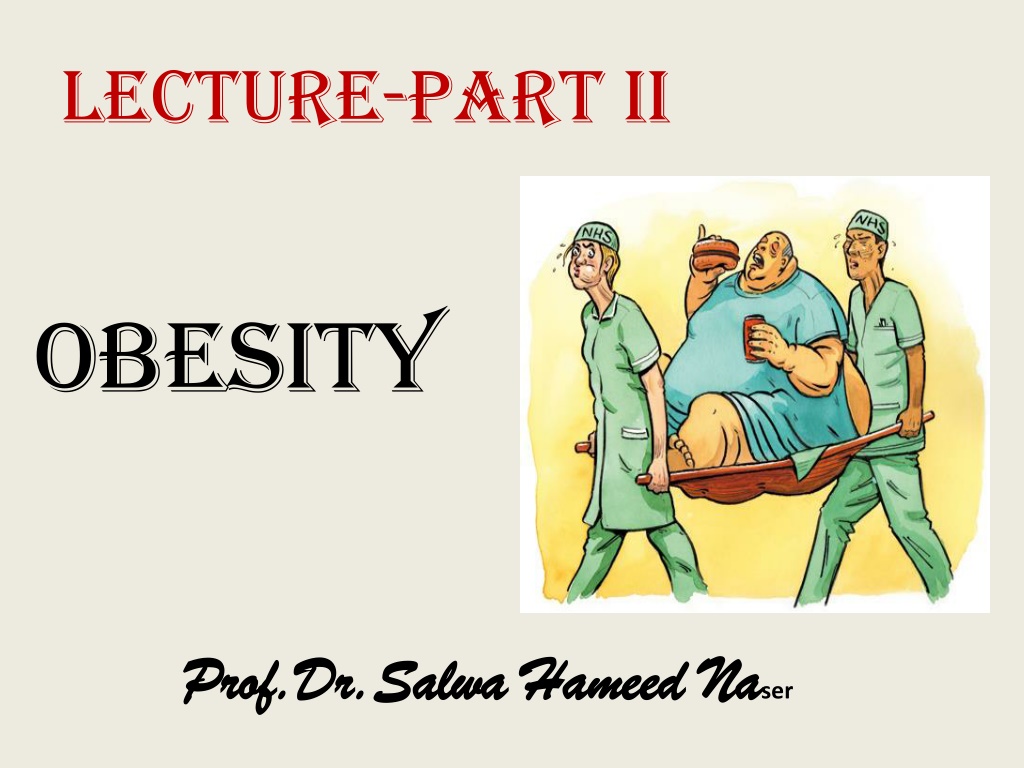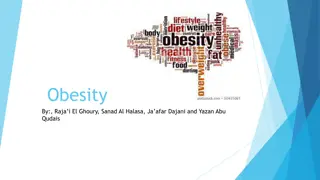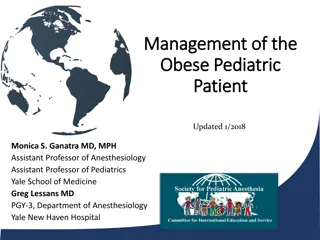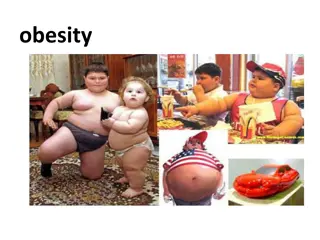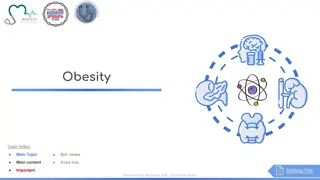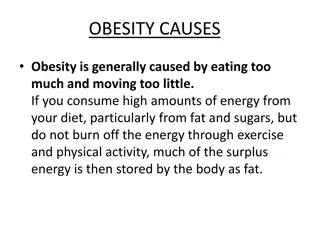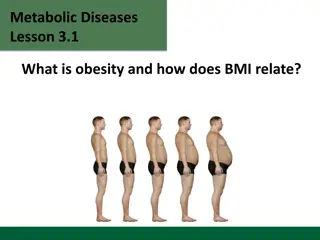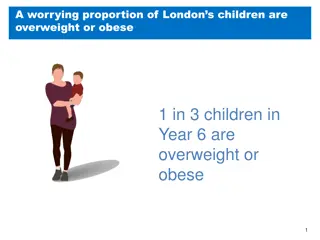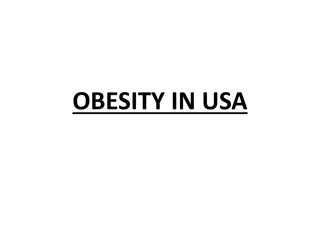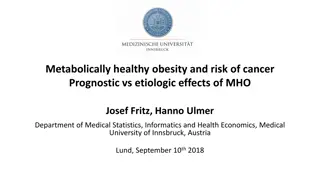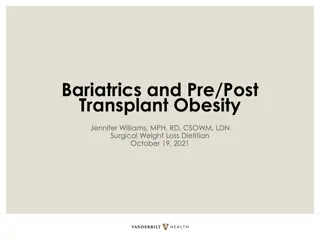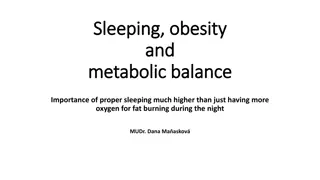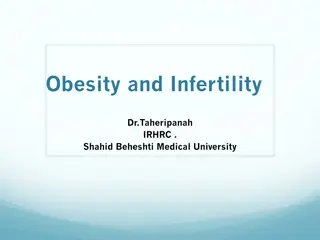Understanding Obesity: Causes, Effects, and Regulation
The lecture explores the impact of obesity on the human body, focusing on the size and number of fat cells, genetic contributions, and environmental factors. It delves into how adipocytes expand and multiply, the effects of excess calories on various tissues, and the theory of body weight regulation. Furthermore, it highlights genetic influences on obesity, such as biologic origins and mutations, and environmental factors like sedentary lifestyles and eating behaviors that contribute to weight gain.
Download Presentation

Please find below an Image/Link to download the presentation.
The content on the website is provided AS IS for your information and personal use only. It may not be sold, licensed, or shared on other websites without obtaining consent from the author. Download presentation by click this link. If you encounter any issues during the download, it is possible that the publisher has removed the file from their server.
E N D
Presentation Transcript
Lecture-Part II OBESITY Prof.Dr.Salwa Prof.Dr.Salwa Hameed Hameed Na Naser
Size and number of fat cells As TAGs are stored, adipocytes can expand to an average of two to three times their normal volume With prolonged overnutrition, preadipocytes within adipose tissue are stimulated to proliferate and differentiate into mature fat cells, increasing the number of adipocytes The estimated average lifespan of an adipocyte is 10 years. Obese individuals can have up to five times the normal number of fat cells. If excess calories cannot be accommodated within adipose tissue, the excess fatty acids spill over into other tissues, such as muscle and liver. The amount of this so-called ectopic fat is strongly associated with insulin resistance. With weight loss in an obese individual, the size of the fat cells is reduced, but the number of fat cells is not usually affected.
Hypertrophic (increased size) and hyperplastic (increased number) changes to adipocytes are thought to occur in severe obesity.
BODY WEIGHT REGULATION the hypothesis that each individual has a biologically predetermined set point for body weight. The body attempts to add to adipose stores when the body weight falls below the set point and to lose adipose from stores when the body weight is higher than the set point. Thus, the body defends the set point. Weight changes following episodes of overfeeding or underfeeding followed by feeding with no restrictions.
Genetic contributions to obesity 1. Biologic origin: The importance of genetics as a determinant of obesity is indicated by the observation that children show a body weight that correlates with their biologic parents. Furthermore, identical twins have very similar BMIs 2. Mutations: single gene mutations can cause human obesity. For example, mutations in the gene for the adipocyte hormone leptin or its receptor produce hyperphagia and massive obesity. Note: Body weight, rather than being irrevocably set, seems to drift around a settling point, reflecting a balance between environmental factors that influence food intake and energy expenditure, and biologic factors that control body weight.
Environmental and behavioral contributions Environmental factors: The ready availability of palatable energy-dense foods. Sedentary lifestyles: Encouraged by TV watching, automobiles, computer usage, and energy-sparing devices in the workplace and at home decrease physical activity and enhance the tendency to gain weight. Eating behaviors: such as snacking, portion size, variety of foods Consumed, an individual s unique food preferences, and the number of people present during eating also influence food consumption.
MOLECULES THAT INFLUENCE OBESITY Obesity results when energy (caloric) intake exceeds energy expenditure. The mechanism underlying this imbalance involves a complex interaction of biochemical, neurologic, environmental, and psychologic factors. A. Long-term signals Long-term signals reflect the status of TAG stores. 1. Leptin: Leptin is an adipocyte peptide hormone that is secreted in proportion to the size of fat stores. When we consume fewer calories than we need, body fat declines, and leptin production from the fat cell decreases. 2. Insulin: Obese individuals are also hyperinsulinemic. Like leptin, insulin acts on hypothalamic neurons to dampen appetite.
B. Short-term signals Short-term signals from the gastrointestinal tract control hunger and satiety, which affect the size and number of meals over a time course of minutes to hours. In the absence of food intake (between meals), the stomach produces ghrelin, an orexigenic (appetite-stimulating) hormone that drives hunger. As food is consumed, gut hormones, including cholecystokinin (CCK) and peptide YY, among others, induce satiety (an anorexigenic effect), thereby terminating eating, through actions on gastric emptying and neural signals to the hypothalamus. Within the hypothalamus, neuropeptides such as neuropeptide Y (orexigenic) and -melanocyte stimulating hormone ( -MSH), which is anorexigenic, and neurotransmitters, such as serotonin and dopamine, are important in regulating hunger and satiety. Long-term and short-term signals interact, insofar as leptin can affect the sensitivity of hypothalamic neurons to short-term signals such as CCK.
Some signals that influence appetite and satiety CCK = cholecystokinin,PYY = peptide YY.
